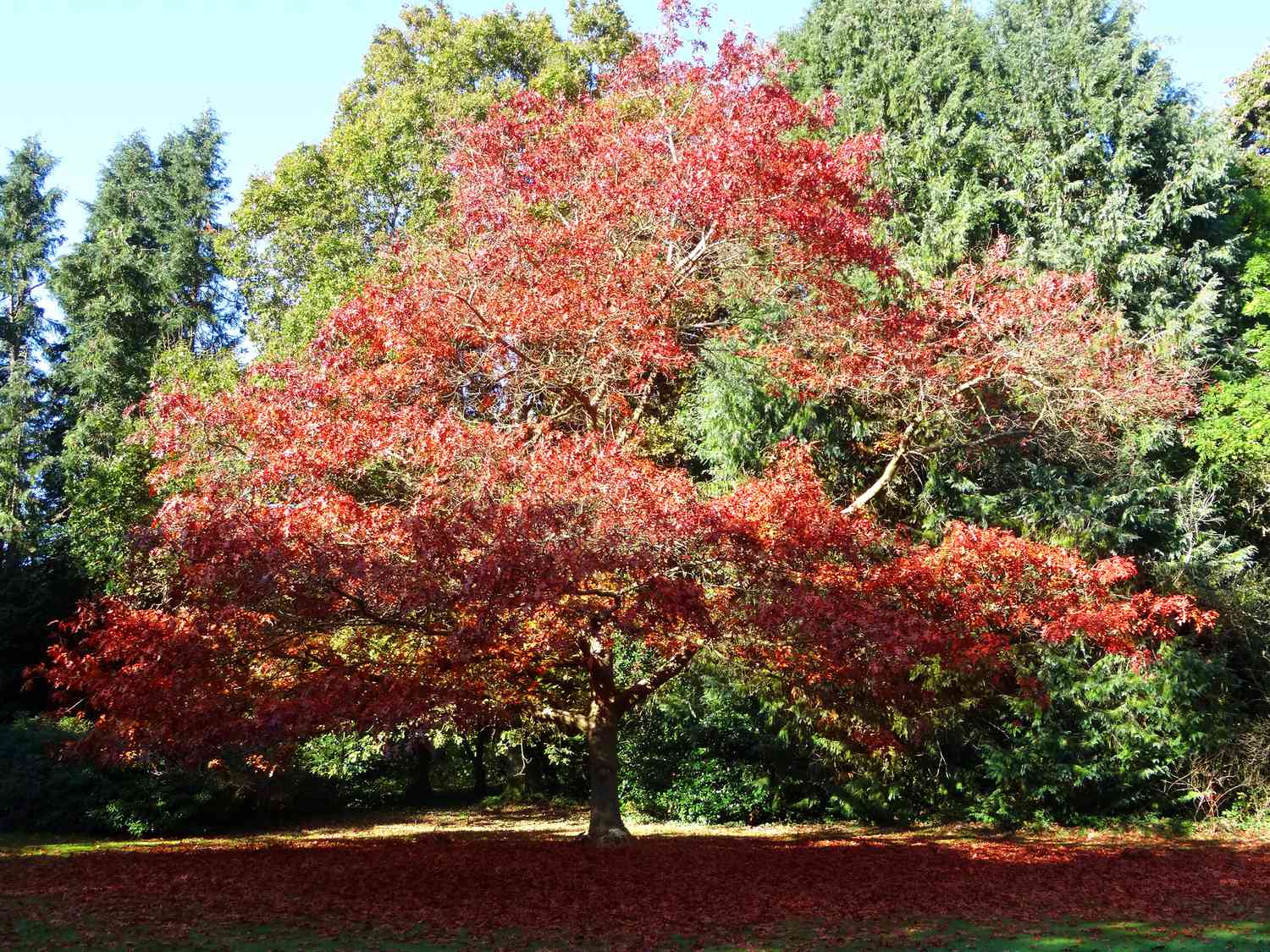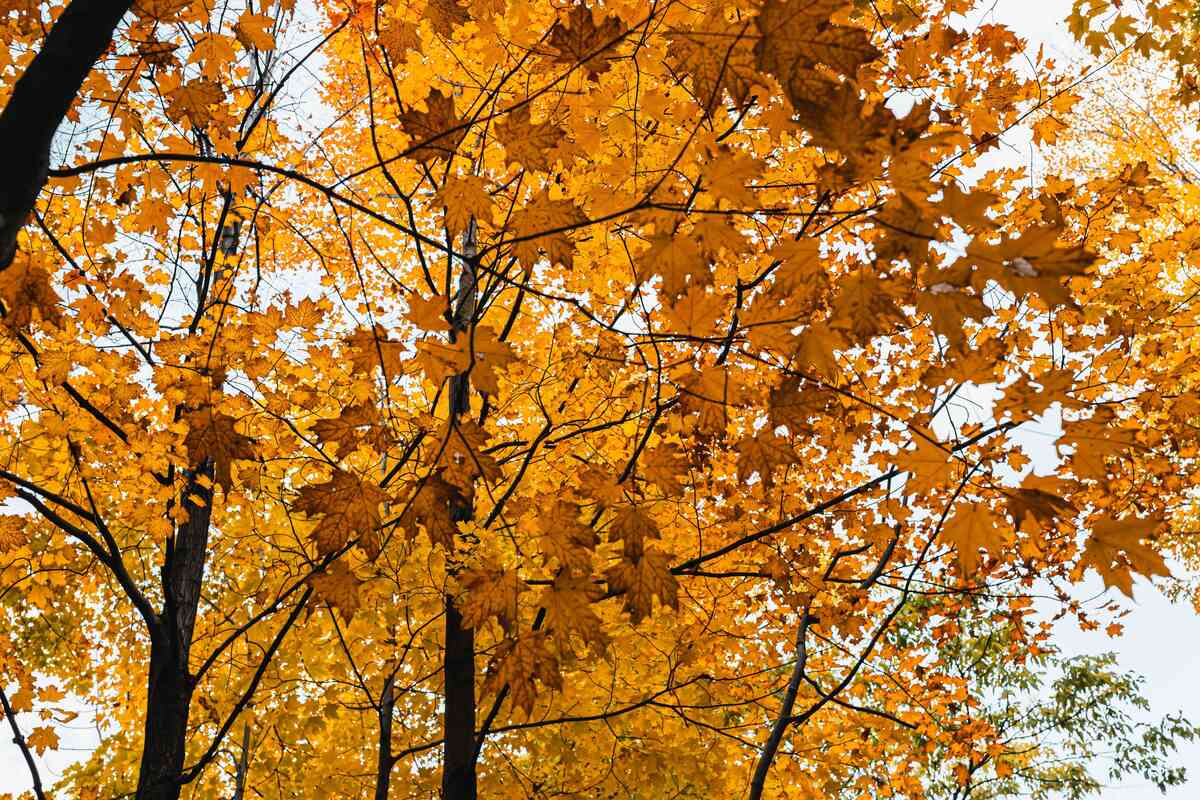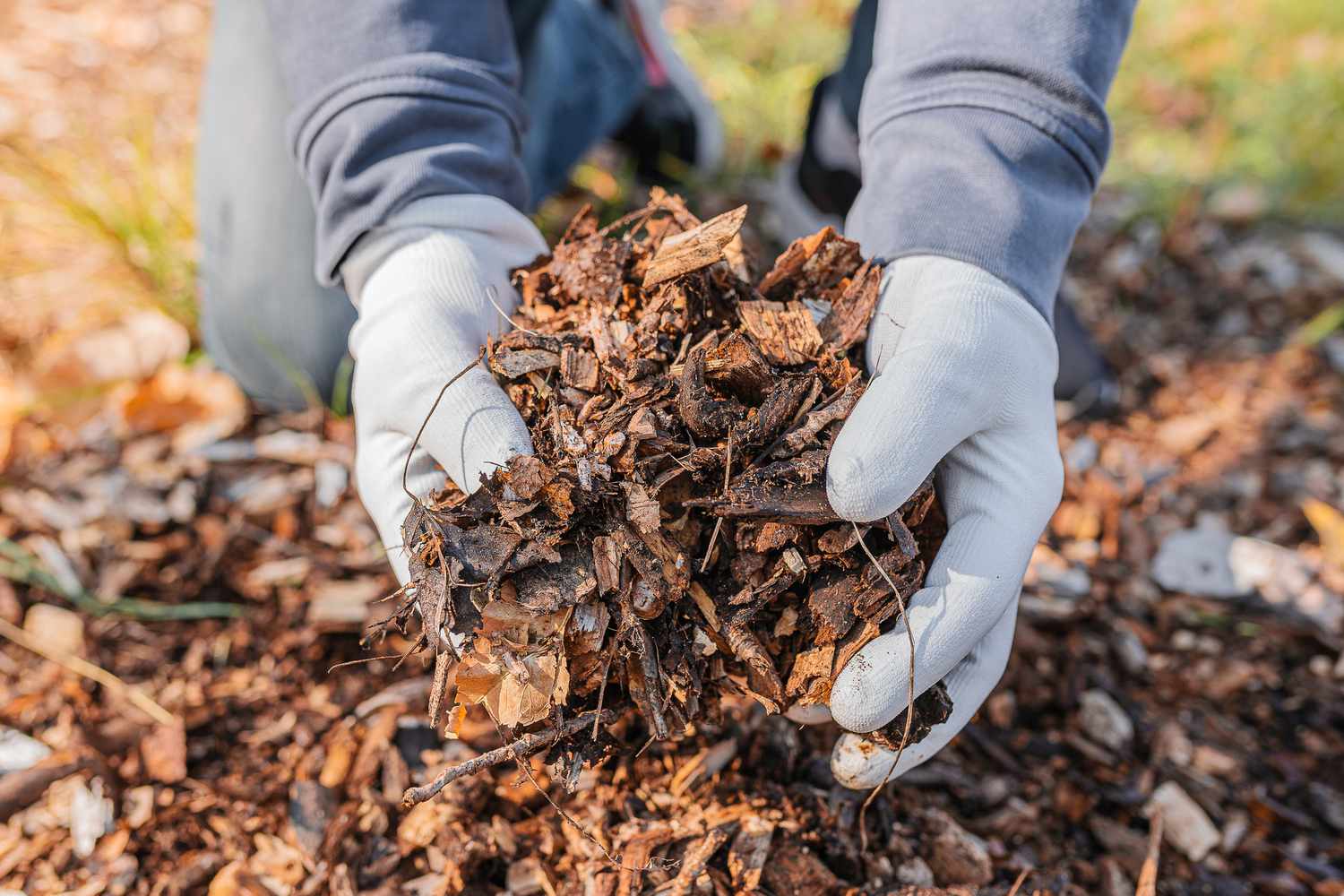Home>Gardening News and Trends>Latest News>How To Identify Trees By Leaves


Latest News
How To Identify Trees By Leaves
Modified: January 22, 2024
Learn how to identify different types of trees by their leaves. Stay updated with the latest news on tree identification techniques and methods.
(Many of the links in this article redirect to a specific reviewed product. Your purchase of these products through affiliate links helps to generate commission for Chicagolandgardening.com, at no extra cost. Learn more)
Table of Contents
Introduction
Have you ever taken a relaxing walk in the woods and wondered about the different types of trees surrounding you? Being able to identify trees by their leaves not only enhances your understanding and appreciation of nature, but it also provides valuable information about the environment and ecosystem. Whether you are an avid nature enthusiast, a gardener, or simply curious about the world around you, learning how to identify trees by their leaves is a valuable skill to have.
The leaves of a tree are like its fingerprints – each species has its unique features that can be observed and studied. By examining the shape, size, texture, color, and arrangement of the leaves, you can decipher the identity of the tree species. It’s like solving a puzzle where each leaf provides a clue.
Tree leaf identification is not only a fascinating hobby; it is also practical knowledge for various fields. For example, foresters and arborists rely on leaf identification to manage and evaluate forest resources. Botanists and ecologists use it to study plant diversity and distribution. Even casual hikers and outdoor enthusiasts can benefit from knowing their surroundings and understanding the natural environment.
In this article, we will explore the importance of identifying trees by their leaves, discuss common leaf characteristics to consider, examine different types of trees, provide a leaf identification guide, and offer tips for successful tree leaf identification. By the end of this article, you will have the knowledge and confidence to identify trees by their leaves in various settings.
Importance of Identifying Trees by Leaves
Identifying trees by their leaves holds great significance in various aspects of our lives. Here are some reasons why learning this skill is valuable:
1. Environmental Awareness:
By identifying trees through their leaves, you can gain a deeper appreciation for the natural world around you. It helps you develop a stronger connection to the environment and raises your awareness about the importance of preserving and protecting trees and forests. Understanding the different tree species in an area allows you to recognize their unique contributions to the ecosystem.
2. Outdoor Adventures:
Whether you enjoy hiking, camping, or simply exploring nature, being able to identify trees by their leaves adds an extra layer of enjoyment to your outdoor experiences. It enables you to engage with the environment on a deeper level and fosters a sense of curiosity and discovery.
3. Landscaping and Gardening:
If you are a homeowner or an aspiring gardener, knowing how to identify trees by their leaves can help you make informed decisions about which trees to plant in your yard. Understanding the specific characteristics and requirements of different tree species allows you to create a well-balanced and visually appealing landscape.
4. Forest Management:
For foresters, arborists, and land managers, tree leaf identification is essential for efficient forest management and conservation efforts. It aids in monitoring tree health, assessing forest composition, and identifying invasive species that may pose a threat to the ecosystem.
5. Educational Purposes:
Trees are an integral part of science education. Teaching students how to identify trees by their leaves promotes observation skills and an understanding of plant diversity. It also encourages a sense of curiosity and an appreciation for the natural world.
By recognizing the importance of identifying trees by their leaves, we can foster a greater understanding and respect for the natural environment. Whether for personal enjoyment, professional reasons, or educational purposes, this skill enables us to engage with nature in a meaningful and enriching way.
Common Leaf Characteristics to Consider
When it comes to identifying trees by their leaves, there are several key characteristics to consider. By examining these features, you can narrow down the possibilities and identify the tree species more accurately. Here are some common leaf characteristics to look for:
1. Leaf Shape:
The shape of the leaf is one of the most noticeable characteristics. Leaves can be classified into various shapes, such as ovate (egg-shaped), lanceolate (long and narrow), cordate (heart-shaped), palmate (hand-like), or lobed (with distinct indentations or divisions).
2. Leaf Margin:
The margin or edge of the leaf can provide valuable information. It can be smooth, serrated (with jagged teeth), lobed (with rounded indentations), or deeply divided. Examining the shape and pattern of the leaf margin can help in narrowing down the tree species.
3. Leaf Venation:
Leaf venation refers to the arrangement of veins within the leaf. It can be pinnate (with a central vein and smaller branching veins), palmate (with multiple veins radiating from a central point), or parallel (with veins running parallel to each other). Understanding the venation pattern can be crucial in identifying certain tree species.
4. Leaf Texture:
The texture of the leaf can vary from smooth to rough, glossy to matte. Some leaves may have fine hairs or spines on their surfaces. Paying attention to the texture can provide important clues about the tree species.
5. Leaf Color:
While leaf color can change throughout the year, it can still be a valuable characteristic for identification. Leaves may be green, yellow, red, purple, or a combination of colors. Additionally, observing changes in leaf color during different seasons can be helpful in identifying certain trees.
6. Leaf Arrangement:
The arrangement of leaves on the stem is another important factor to consider. Leaves can be arranged alternately, where each leaf emerges from a different level on the stem, or they can be opposite, where two leaves emerge from the same level but on opposite sides of the stem. Some trees may have whorled leaf arrangement, with three or more leaves emerging from the same level.
By observing and noting these common leaf characteristics, you can begin to narrow down the possibilities and identify trees more accurately. Remember, no single characteristic alone can determine the tree species, but a combination of multiple characteristics can lead you to a correct identification.
Broadleaf Trees
Broadleaf trees, also known as hardwood trees, are a diverse group of trees that are characterized by their broad, flat leaves. These trees are found in various habitats and regions around the world and are known for their wide array of shapes, sizes, and colors. Here are some notable examples of broadleaf trees:
1. Oak Trees:
Oak trees are iconic and widely recognized for their strong and durable wood. They have lobed leaves with a characteristic shape that varies depending on the oak species. Oak trees are known for their longevity and can live for several centuries.
2. Maple Trees:
Maple trees are renowned for their vibrant fall foliage, which ranges from fiery reds to golden yellows. They have distinctive palmate leaves with three to five lobes and are prevalent in North America, Europe, and Asia. Maple syrup is also derived from maple trees.
3. Birch Trees:
Birch trees are known for their slender trunks and distinctive white bark. They have small, serrated leaves that are triangular or ovate in shape. Birch trees are common in northern regions and are valued for their wood and beauty in landscaping.
4. Willows:
Willows are known for their pendulous branches and long, slender leaves. They often grow near water bodies and can be found in various regions around the world. Willows have been used for medicinal purposes, and their flexible branches are used to make baskets and furniture.
5. Magnolia Trees:
Magnolia trees are prized for their large, showy flowers and glossy leaves. They have simple, oval-shaped leaves that can be evergreen or deciduous, depending on the species. Magnolias are popular ornamental trees and are native to Asia and the Americas.
These are just a few examples of broadleaf trees, but there are many more species that offer unique characteristics and benefits. Broadleaf trees play a crucial role in providing shade, improving air quality, conserving soil, and providing habitats for countless species. They also have cultural and economic significance, being used in industries such as furniture making, construction, and paper production.
When identifying broadleaf trees, pay attention to the leaf characteristics mentioned earlier, such as shape, margin, texture, color, and arrangement. These will help you narrow down the possibilities and identify the specific broadleaf tree species more accurately.
Coniferous Trees
Coniferous trees, also known as evergreen trees, are a diverse group of trees characterized by their needle-like or scale-like leaves and the production of cones. These trees are well-adapted to cold climates and can be found in various regions around the world. Here are some notable examples of coniferous trees:
1. Pine Trees:
Pine trees are perhaps the most well-known coniferous trees. They have long, slender needles that are arranged in clusters, and their cones play a significant role in reproduction. Pine trees are valued for their softwood timber and are used in construction, furniture making, and paper production.
2. Spruce Trees:
Spruce trees are known for their symmetrical shape and short, sharp needles. They have thin, papery bark and cones that hang down from the branches. Spruce trees are commonly found in colder regions and are used for their wood in construction, musical instruments, and paper manufacturing.
3. Fir Trees:
Fir trees are distinguished by their flat and soft needles that are attached directly to the branches. They have upright cones that stand atop the branches. Fir trees are commonly used as Christmas trees because of their attractive foliage and pleasant aroma.
4. Cedar Trees:
Cedar trees are known for their fragrant wood and unique foliage. They have scale-like leaves that are arranged in an overlapping pattern. Cedar wood is highly valued for its natural resistance to decay and is used in various applications, such as outdoor furniture, closets, and roofing.
5. Cypress Trees:
Cypress trees have feathery, fern-like foliage and a distinctive peeling bark. They are often found in wetland areas and are known for their ability to withstand waterlogged conditions. Cypress wood is durable and resistant to decay, making it valuable for outdoor construction and furniture.
Coniferous trees provide numerous benefits to the environment and humans. They are excellent for erosion control, as their deep root systems help stabilize soil. They also provide shelter and food for a variety of wildlife. Moreover, coniferous trees are often used in landscaping to create privacy screens, windbreaks, and visual interest in gardens and parks.
When identifying coniferous trees, pay attention to the needle arrangement, shape, and length, as well as the distinct features of their cones and bark. These characteristics, in addition to the overall tree form, will help you distinguish between different coniferous tree species.
Leaf Identification Guide
Identifying trees by their leaves can be an exciting and rewarding activity. While it may seem overwhelming at first, having a guide to follow can simplify the process. Here are some steps to help you identify trees based on their leaves:
1. Observe the Leaf Shape:
Begin by examining the overall shape of the leaf. Is it ovate, lanceolate, cordate, palmate, or lobed? Pay attention to any unique features or distinct characteristics that can help narrow down your search.
2. Examine the Leaf Margin:
Next, look at the edge or margin of the leaf. Is it smooth, serrated, lobed, or deeply divided? Some tree species have leaves with highly specific margin characteristics that can aid in identification.
3. Determine the Leaf Venation:
Take note of the pattern of veins within the leaf. Are they pinnate, palmate, or parallel? The arrangement and structure of veins can provide valuable clues as to the tree’s identity.
4. Note the Leaf Texture:
Assess the texture of the leaf. Is it smooth, rough, glossy, or matte? Some tree species have unique textures that can help differentiate them from others.
5. Pay Attention to Leaf Color:
Although leaf color can vary throughout the year, it can still be a useful characteristic for identification. Take note of the general color and any variations or changes in color during different seasons.
6. Consider Leaf Arrangement:
Observe how the leaves are arranged on the stem. Are they alternately arranged, opposite, or whorled? Leaf arrangement can provide additional clues to narrow down the possibilities.
7. Use Field Guides or Online Resources:
Refer to field guides or online resources that specialize in tree leaf identification. These guides often provide detailed descriptions, illustrations, and photographs to help you identify tree species based on leaf characteristics.
Remember that identifying trees by their leaves is not an exact science, and some trees may have leaves that exhibit variations or similar characteristics. It can be helpful to compare the leaves you are trying to identify with known samples or consult with experts in the field for accurate identification.
By following this leaf identification guide and being patient and observant, you can develop a valuable skill for recognizing and appreciating the diverse range of tree species in your environment.
Tips for Successful Tree Leaf Identification
Tree leaf identification can sometimes be challenging, but with the right approach and some helpful tips, you can increase your success rate. Here are some tips to keep in mind when identifying tree leaves:
1. Start with Common Tree Species:
Begin by familiarizing yourself with the most common tree species in your area. Focus on their distinctive leaf characteristics, such as shape, margin, and venation. This will serve as a foundation for your leaf identification skills.
2. Use Multiple Leaf Characteristics:
Remember that no single characteristic can determine the tree species with certainty. It is essential to consider a combination of leaf features, such as shape, margin, texture, color, arrangement, and venation. The more characteristics you can identify, the more accurate your identification will be.
3. Observe the Whole Tree:
Don’t solely rely on isolated leaves for identification. Take a step back and observe the entire tree, including its bark, overall form, and growth habits. These characteristics can provide additional clues to narrow down the possibilities.
4. Take Seasonal Changes into Account:
Be aware that leaf characteristics can change throughout the seasons. Consider not only the appearance of the leaves during the current season but also the changes they go through in different seasons. This can help you in determining the species more accurately.
5. Use Field Guides and Apps:
Invest in reliable field guides or use smartphone apps specifically designed for tree identification. These tools often provide detailed descriptions, photographs, and interactive features that can aid in the identification process. Make sure to choose reputable sources for accurate information.
6. Seek Expert Advice:
If you’re unsure about the identity of a particular tree, don’t hesitate to seek guidance from local botanical gardens, arborists, or forestry experts. They have extensive knowledge and experience and can help confirm or refine your identification.
7. Keep a Record:
Maintain a personal record or journal of the trees you have identified. Include details like location, date, and any additional information you find interesting. This not only helps you organize your knowledge but also allows you to track your progress over time.
Remember, tree leaf identification is a skill that develops with practice and experience. Don’t be discouraged if you encounter challenges along the way. With continued observation and learning, you’ll gradually become more proficient at identifying tree species by their leaves.
Conclusion
Identifying trees by their leaves is a fascinating and valuable skill that connects us to the natural world and deepens our understanding of the environment. By observing leaf characteristics such as shape, margin, venation, texture, color, and arrangement, we can unlock the secrets of tree identification and appreciate the diversity of tree species around us.
Whether you are a nature enthusiast, gardener, hiker, or student, learning how to identify trees by their leaves offers numerous benefits. It enhances our environmental awareness, allowing us to recognize the importance of preserving and protecting trees and forests. It also adds an extra layer of enjoyment to outdoor experiences as we become more attuned to the natural world around us.
When identifying trees, it’s important to consider multiple leaf characteristics and not rely solely on a single feature. By utilizing field guides, online resources, and seeking expert advice when needed, we can refine our identification skills and increase our accuracy.
As we delve into the world of tree leaf identification, we gain insights into the diverse range of tree species, their ecological significance, and their cultural and economic importance. Broadleaf trees with their varied shapes and colors, and coniferous trees with their unique needle-like leaves, both contribute to the beauty and balance of our ecosystems.
Remember to be patient and persistent in your quest to identify trees by their leaves. Practice observing, comparing, and noting down your findings to sharpen your skills over time. With dedication and curiosity, you can become proficient in recognizing and appreciating the incredible diversity of trees that surround us.
So, the next time you take a walk in nature or spot a tree in your backyard, take a closer look at its leaves. Unlock the secrets they hold, and let the world of tree leaf identification unfold before your eyes.










